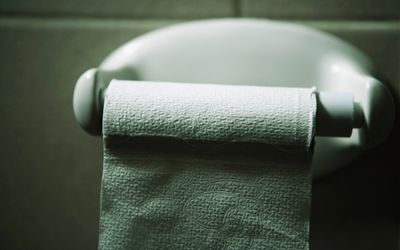INFRASTRUCTURE: Strategic projects tackle water, energy challenges
by Johann Barnard,
2014-11-20 07:01:30.0
“WE HAVE to try to limit the number of flushing toilets being built before we can address the problem with treatment plants,” says a Limpopo community leader.
This unexpected suggestion speaks volumes about the extent of the water and sanitation challenges that rural communities face. It flies in the face of government’s stated goal to eradicate the bucket toilet system and provide clean water and proper sanitation to many millions of citizens who still suffer dire living conditions.
Requesting anonymity in order to protect his identity and relations with local and provincial government stakeholders, the call to limit flushing toilets is based on pragmatism. “In Polokwane, the main water treatment plant is overloaded by 500%. Government claims that we have water purification plants, but they are inadequate and sewerage works have collapsed,” he says. “We are trying to encourage community members to urinate in a bucket and use this in their gardens: it is a very good fertiliser and why use 10l of water to flush away 100ml of urine?”
He claims that all dams in Limpopo are polluted and that trust in the quality and cleanliness of tap water has been completely lost.
“And it is like that everywhere in the province, especially in the previous so-called homelands. There has been no improvement since democracy, in fact it has got even worse.”
Government, at all levels, has recognised the challenge that water and sanitation systems face.
Water and Sanitation Minister Nomvula Mokonyane said in her budget vote speech this year that government would implement several schemes to improve provincial and local government efforts to revamp ageing water supply infrastructure.
Earlier in the year, President Jacob Zuma opened the R3bn De Hoop Dam in Sekhukhune, Limpopo — one of the largest built in the country in the last 20 years. The dam is expected to alleviate the province’s widespread water challenges.
And it is sorely needed.
The Right to Access Sufficient Water and Decent Sanitation in SA report released by the SA Human Rights Commission (SAHRC) this year highlights the extent of the problem in the country’s northern-most province. It cites the 2011 Census results that show that 27% of households in the province do not have access to water at all, or within 200m of a stand. Almost two-thirds of households in the province are without sufficient sanitation services, with almost 70% relying on an unventilated pit latrine.
Probably the biggest indictment in the report was the SAHRC’s dedication of the report to six year-old Michael Komape of Chebeng Village in Limpopo, who died after falling into a pit toilet at his school in February 2014.
The Limpopo community leader acknowledges that the schools are one of the big challenges in terms of sanitation services.
However, he sees hope in the fact that school children are being awakened to their rights and are becoming increasingly vocal in their communities about the need to address inadequate infrastructure.
“We will overcome those challenges,” he says. “We have been engaging the provincial government with their full support. We have managed to get a community forum established to try to solve the problems.”
That attitude is encouraging and while there certainly has been progress, this has been a long-running problem and rural communities can only hope that promises and programmes to provide decent water and sanitation services are delivered.


Picture: THINKSTOCK
“WE HAVE to try to limit the number of flushing toilets being built before we can address the problem with treatment plants,” says a Limpopo community leader.
This unexpected suggestion speaks volumes about the extent of the water and sanitation challenges that rural communities face. It flies in the face of government’s stated goal to eradicate the bucket toilet system and provide clean water and proper sanitation to many millions of citizens who still suffer dire living conditions.
Requesting anonymity in order to protect his identity and relations with local and provincial government stakeholders, the call to limit flushing toilets is based on pragmatism. “In Polokwane, the main water treatment plant is overloaded by 500%. Government claims that we have water purification plants, but they are inadequate and sewerage works have collapsed,” he says. “We are trying to encourage community members to urinate in a bucket and use this in their gardens: it is a very good fertiliser and why use 10l of water to flush away 100ml of urine?”
He claims that all dams in Limpopo are polluted and that trust in the quality and cleanliness of tap water has been completely lost.
“And it is like that everywhere in the province, especially in the previous so-called homelands. There has been no improvement since democracy, in fact it has got even worse.”
Government, at all levels, has recognised the challenge that water and sanitation systems face.
Water and Sanitation Minister Nomvula Mokonyane said in her budget vote speech this year that government would implement several schemes to improve provincial and local government efforts to revamp ageing water supply infrastructure.
Earlier in the year, President Jacob Zuma opened the R3bn De Hoop Dam in Sekhukhune, Limpopo — one of the largest built in the country in the last 20 years. The dam is expected to alleviate the province’s widespread water challenges.
And it is sorely needed.
The Right to Access Sufficient Water and Decent Sanitation in SA report released by the SA Human Rights Commission (SAHRC) this year highlights the extent of the problem in the country’s northern-most province. It cites the 2011 Census results that show that 27% of households in the province do not have access to water at all, or within 200m of a stand. Almost two-thirds of households in the province are without sufficient sanitation services, with almost 70% relying on an unventilated pit latrine.
Probably the biggest indictment in the report was the SAHRC’s dedication of the report to six year-old Michael Komape of Chebeng Village in Limpopo, who died after falling into a pit toilet at his school in February 2014.
The Limpopo community leader acknowledges that the schools are one of the big challenges in terms of sanitation services.
However, he sees hope in the fact that school children are being awakened to their rights and are becoming increasingly vocal in their communities about the need to address inadequate infrastructure.
“We will overcome those challenges,” he says. “We have been engaging the provincial government with their full support. We have managed to get a community forum established to try to solve the problems.”
That attitude is encouraging and while there certainly has been progress, this has been a long-running problem and rural communities can only hope that promises and programmes to provide decent water and sanitation services are delivered.






















Change: -0.47%
Change: -0.61%
Change: 0.53%
Change: -0.42%
Change: -2.12%
Data supplied by Profile Data
Change: -0.46%
Change: -0.22%
Change: -0.47%
Change: 0.00%
Change: -0.21%
Data supplied by Profile Data
Change: -1.29%
Change: -1.15%
Change: -0.68%
Change: -1.28%
Change: -1.13%
Data supplied by Profile Data
Change: 0.62%
Change: 1.35%
Change: 1.45%
Change: 0.00%
Change: 1.15%
Data supplied by Profile Data